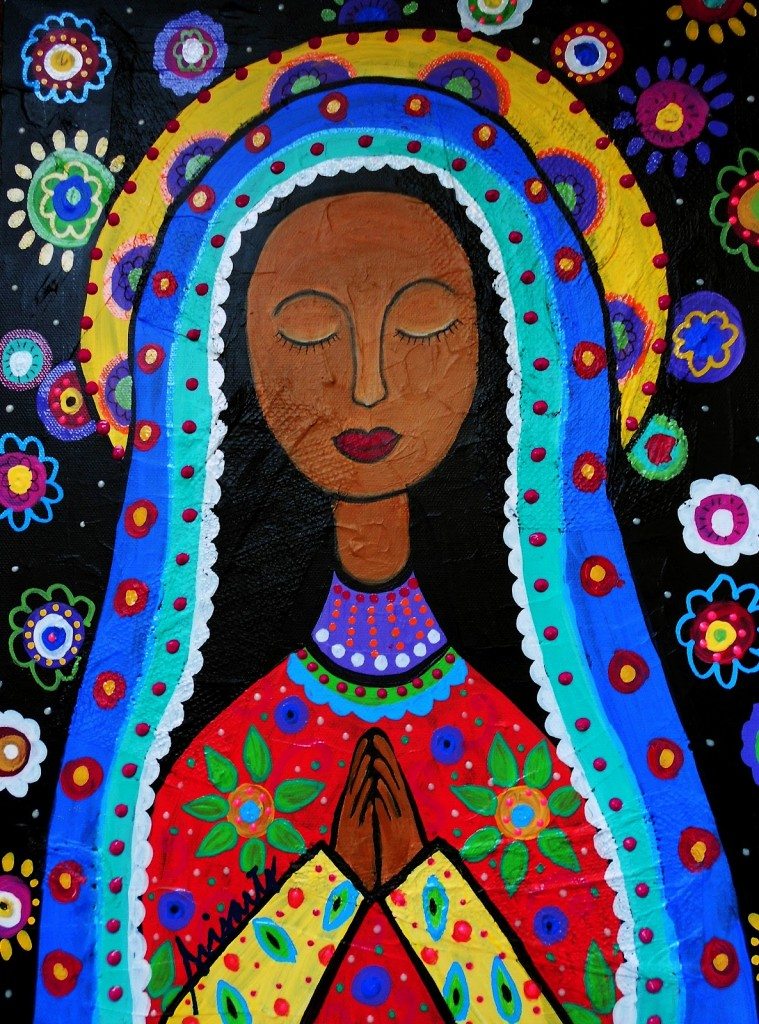Growing up, my family spent the better part of December celebrating the beautiful cultural traditions observed by Mexicans around the globe. Among these, on December 12, our family participated in the celebration in honor of Our Lady of Guadalupe (Virgen de Guadalupe). We honored her with roses, a symbol of the flowers that she is said to have offered to a man named Juan Diego when she appeared to him in Mexico in 1531. We celebrated her through song and dance. Equally important, we gathered in the church hall afterward to break bread and (my favorite) a piñata.
I grew up in a small rural community in Northwest Ohio. Nearly all of the Latino families who lived there, including mine, had at one time planted, picked, sorted and packed a variety of fruits and vegetables, including tomatoes, cucumbers and sugar beet, among others. Our families comprised the current or former farmworker community in that area. We represented new and settled immigrants, not to mention some families who had lived and worked in the United States for generations. Many of us shared a historical and cultural context.
While this time of year conjures many wonderful memories, it is not just thoughts of the chocolate and pan dulce that warm my heart. Instead, it is the memory of what those celebrations meant for us as a community. Guadalupe, considered the patron saint of México by Catholics and a protector of the poor, symbolized hope. And the humble Don Diego was a reflection of us.
Today thousands of immigrants around the United States will gather in churches and community halls, much like those that my community gathered in years ago. Among them, undocumented men, women, and children, will lay roses in Guadalupe’s honor. They will sing, they will dance, and they will pray. This year, individuals throughout the nation will pray for a reprieve from continued immigration removals and family separation. These community members, including my family, will also gather with hope that members of the House of Representatives will finally make a move to cure our broken immigration system and provide a pathway to citizenship for all aspiring U.S. citizens.
***
Mónica Ramírez is the daughter and granddaughter of migrant farmworkers. She has been a farmworker and immigrant rights activist for more than 18 years. Mónica is nationally recognized as an expert and a leader in the movement to end gender discrimination, including workplace sexual violence, against farmworker and immigrant women. She is also a contributor to Latino Rebels.




The Gnostics derived their http://633cash.com/Games leading doctrines and ideas from Plato and Philo, the Zend-avesta, the Kabbalah, and the Sacred books of India and Egypt; and http://633cash.com/Pengaturan” thus introduced http://633cash.com/Daftar into the bosom of Christianity the cosmological and theosophical speculations, which had formed the larger portion of the ancient religions of the Orient, http://www.cintaberita.com joined to those of the Egyptian, Greek, http://633cash.com/Promo and Jewish doctrines, which the Neo-Platonists had equally adopted in the Occident..It is admitted that the cradle http://633cash.com/Deposit of http://633cash.com/Withdraw Gnosticism is probably to be looked for in Syria http://633cash.com/Berita and even in Palestine. Most of its expounders wrote in that corrupted form of the Greek used by the Hellenistic Jews…and there was a striking http://633cash.com/Girl analogy between their doctrines and those of the Judeo-Egyptian Philo of Alexandria; itself the seat of three schools, at once philosophic and religious, the http://633cash.com/LivescoreGreek, the Egyptian, and the Jewish. Pythagoras and Plato, the most mystical of the Grecian philosophers (the latter heir to the doctrines of the former), and who had travelled, the latter in Egypt, and the former in Phoenicia, India, and Persia, also taught the esoteric doctrine…The dominant doctrines of Plutonism were found in Gnosticism